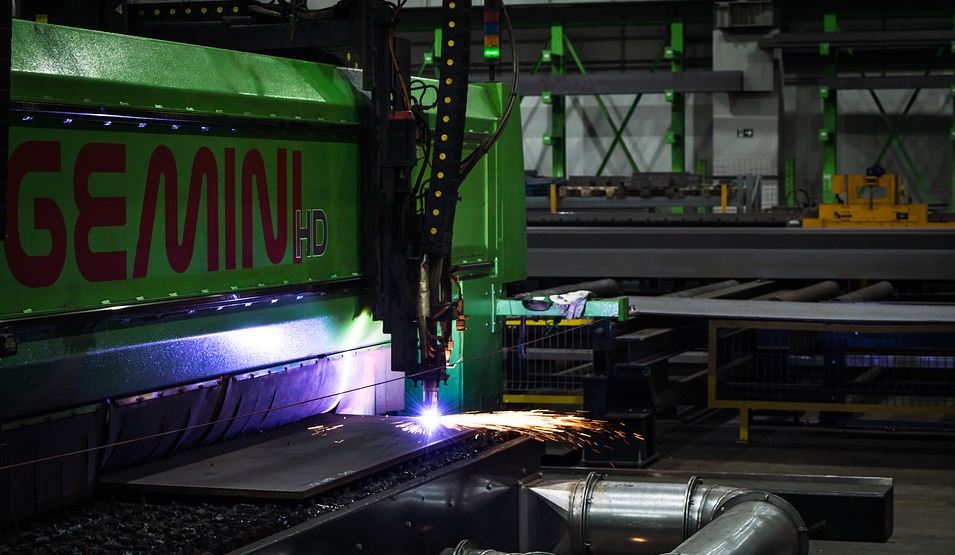Metalworkers use some of the strongest materials in the world, which means they need to find ways to bend and cut those materials to fit their needs. There are dozens of available options when it comes to cutting and shaping metals, so it’s a good idea to consider factors like price and efficiency when deciding.
If you’re a metalworker, you’ve probably heard of plasma cutting systems, especially since plasma cutting is now one of the most widely used industrial cutting processes. With its low cost and high rate of precision, it continues to grow in popularity every year.
What is plasma?
While society widely agrees that there are 3 states of matter, many consider plasma to be the fourth. As we add energy to one state of matter, it changes to a different form.
For example, if we melt a solid block of ice by adding thermal energy, it turns into the liquid form of water. If we add energy to water, it turns to the gaseous form of water which is steam. And finally, after adding energy to steam, the gas becomes ionized and turns into plasma.
An example of plasma we can see is lightning. An average lightning bolt reaches temperatures of over 50,000 degrees Fahrenheit, and at that point, its atoms are ionized, resulting in plasma. Plasma is not only ionized, but it also responds to magnets and can conduct electricity. Other examples of plasma are neon lighting and even the Sun.
So, what is plasma cutting?
Plasma cutting is used when highly energized molecules are harnessed to efficiently cut through electrically conductive alloys such as stainless steel, aluminum, and many other similar metals. Mostly used in manufacturing factories, automotive restoration, and construction, it is done at a high speed and with extreme accuracy.
How does it work?
The cutting process is typically done with a plasma torch. Inside, compressed air provides a source for the plasma, and sometimes a second supply of gases is used to shield the workpiece and blow off melted residue.
Electricity supplies the energy so the gas can transform into plasma. The plasma torch has a special nozzle and electrode to control the plasma jet and keep it in place, which gives it the ability to be so famously precise. The positive side of a power supply is fixed to the nozzle, while the negative side is connected to the electrode.
A high-frequency spark ionizes the gas, which makes it able to conduct electricity. This sets off a current path and forms a plasma arc or a stream for the plasma. When the plasma arc contacts the workpiece, it melts through the metal. The second supply of gas then blows the melted material away.
Overall, plasma cutting is seen as an efficient and cost-effective way to take care of all of your metal cutting needs. Depending on what you’re working on, there are many available options for different types of machines you can use. For example, CNC Plasma Cutters are one of the most popular machines used for industrial projects, while metalsmithing hobbyists can buy machines for around $300.
Manufacturers like Messer Cutting Systems offer highly durable straight and bevel plasma cutting machines. These machines are incredibly precise, provide smooth surface edges, and offer a variety of cutting speeds and angles. If you’re looking to implement plasma cutting but want to ensure quality work, you should put Messer at the top of your list for your needs.
There are some possible disadvantages you may want to keep in mind when considering plasma systems for your business. While some plasma cutters are more affordable than alternative cutting machinery, they’re more expensive than others. It also takes a considerable amount of energy and can be loud depending on what materials you’re working with.
Despite the few disadvantages that may come with plasma cutting, it’s a popular option for a reason. If you need high-quality cutting that can be used on many different materials at a high speed, then a plasma cutter may be the machine for you.

